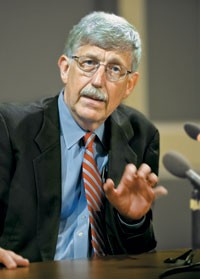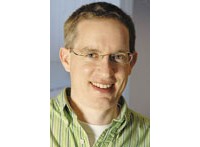Advertisement
Grab your lab coat. Let's get started
Welcome!
Welcome!
Create an account below to get 6 C&EN articles per month, receive newsletters and more - all free.
It seems this is your first time logging in online. Please enter the following information to continue.
As an ACS member you automatically get access to this site. All we need is few more details to create your reading experience.
Not you? Sign in with a different account.
Not you? Sign in with a different account.
ERROR 1
ERROR 1
ERROR 2
ERROR 2
ERROR 2
ERROR 2
ERROR 2
Password and Confirm password must match.
If you have an ACS member number, please enter it here so we can link this account to your membership. (optional)
ERROR 2
ACS values your privacy. By submitting your information, you are gaining access to C&EN and subscribing to our weekly newsletter. We use the information you provide to make your reading experience better, and we will never sell your data to third party members.
Policy
Young Scientists Get Backing
Research institutions plead for more federal funding and proffer early-career scientists new awards
by Sophie L. Rovner
March 13, 2008
a Proposed budget.

a Proposed budget.
This week, a coalition of research institutions and the Howard Hughes Medical Institute independently announced strategies to support young scientists???including chemists???who are struggling to obtain funding for their biomedical research. Both HHMI and the other institutions attribute the researchers' money problems to funding constraints at the National Institutes of Health.
At a March 11 press conference in Washington, D.C., and a subsequent visit to Capitol Hill, representatives of research institutions including Harvard University and the University of California, Los Angeles, called for greater NIH funding. They also released a report entitled "A Broken Pipeline? Flat Funding of the NIH Puts a Generation of Science at Risk."
NIH???s budget doubled between fiscal years 1998 and 2003, the coalition report acknowledges, and rose a further 9% through 2008. In constant dollars, however, the purchasing power of NIH???s budget fell 10% between 2003 and 2008. The report contends that this trend threatens medical progress and discourages future scientists from entering the field.
"Clearly, the message we are sending to these talented young investigators is that academic medical research may be a dead end and that they should consider exploring other career options," said Harvard President Drew Gilpin Faust at the press conference.
The proportion of research grant applications that are funded by NIH has dropped to 24%, Faust added. She said junior researchers are suffering disproportionately because they're competing against more-experienced senior colleagues for scarcer resources. According to the coalition report, the success rate for first-time applicants for NIH's R01 grant???required for establishing a biomedical researcher's credibility???is just 18%. Furthermore, it states, the age for first-time recipients of these grants has risen, from 39 years in 1990 to 43 years in 2007.
Jill A. Rafael-Fortney, an associate professor of molecular and cellular biochemistry at Ohio State University who is profiled in the coalition report, noted that reviewers for her NIH grant application "told us we had good data, a strong team, and well-thought-out experiments. We didn't get funded just because there were others going for their second and third round who were waiting in line."
But more money for NIH is not necessarily the answer to funding more young investigators, other experts say. "The problem of unfunded young investigators has existed for a long time," White House Office of Science & Technology Policy Director John H. Marburger III says. "More money into the existing research model will not solve the problems identified."
Nevertheless, HHMI is trying to help. On March 10, it announced that it will provide $300 million to early-career researchers. Through a national competition, the deep-pocketed biomedical research organization and philanthropy will select up to 70 young scientists—including those studying chemistry related to biology or medicine—and fund their research for six years. Scientists should alert HHMI by April 30 if they plan to apply for support and must submit a completed application by June 10. Final selections will be made by next February.
Applicants must have led their own labs for two to six years in order to qualify for the HHMI awards. HHMI is focusing on researchers in this career stage, according to President Thomas R. Cech, "because many of these scientists are at a high point of their creativity just as they see their start-up funds and early-career awards ending."





Join the conversation
Contact the reporter
Submit a Letter to the Editor for publication
Engage with us on Twitter